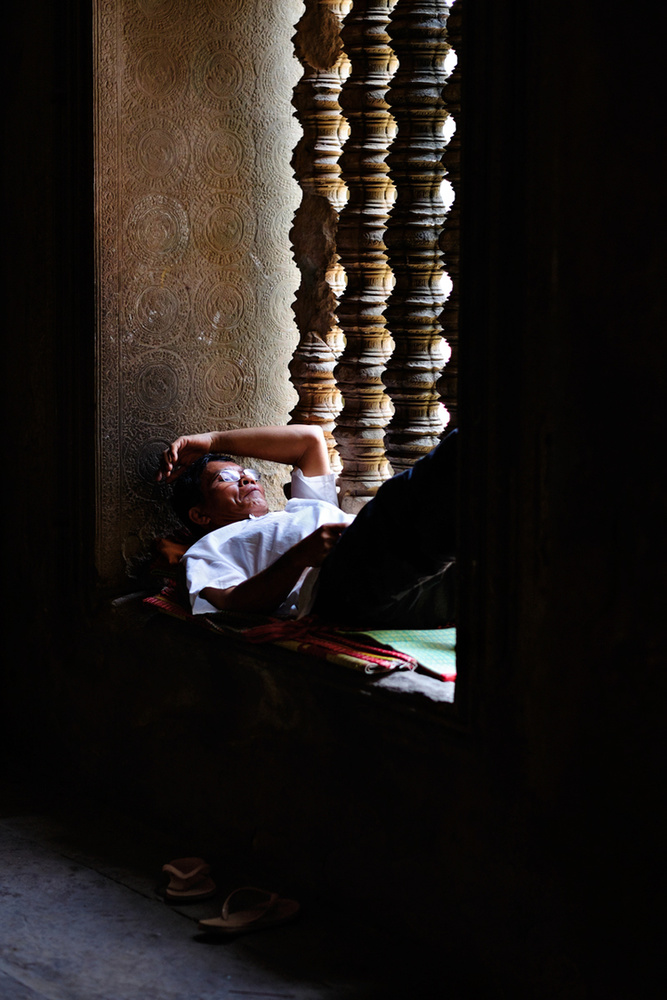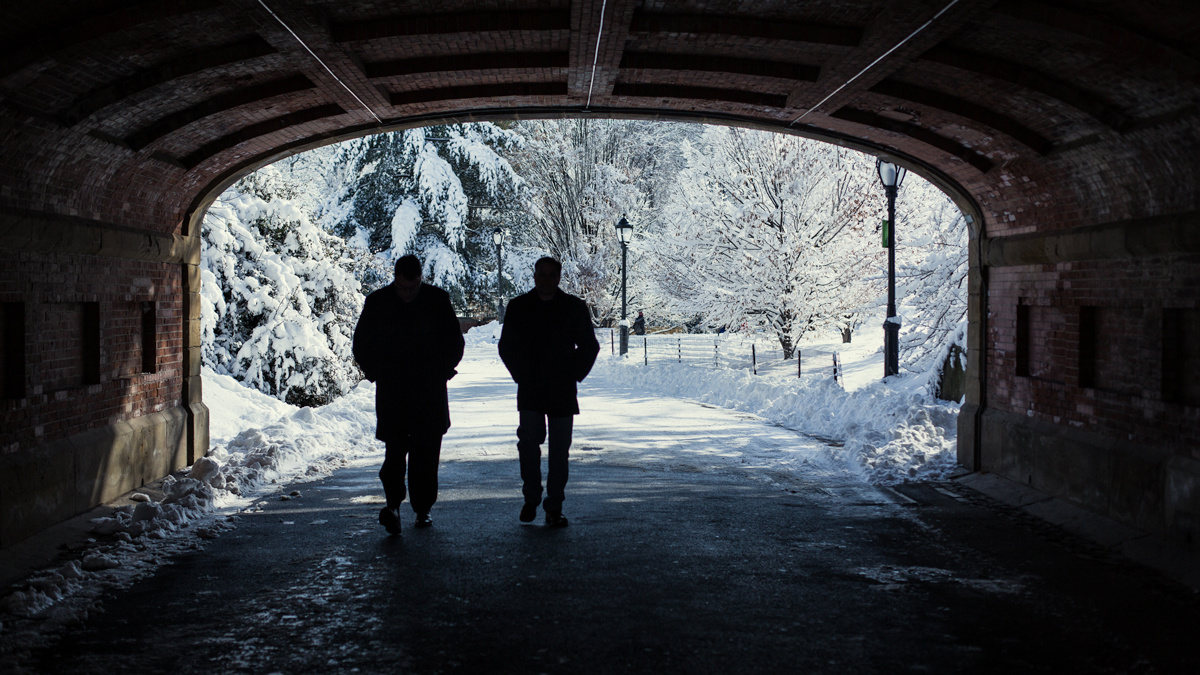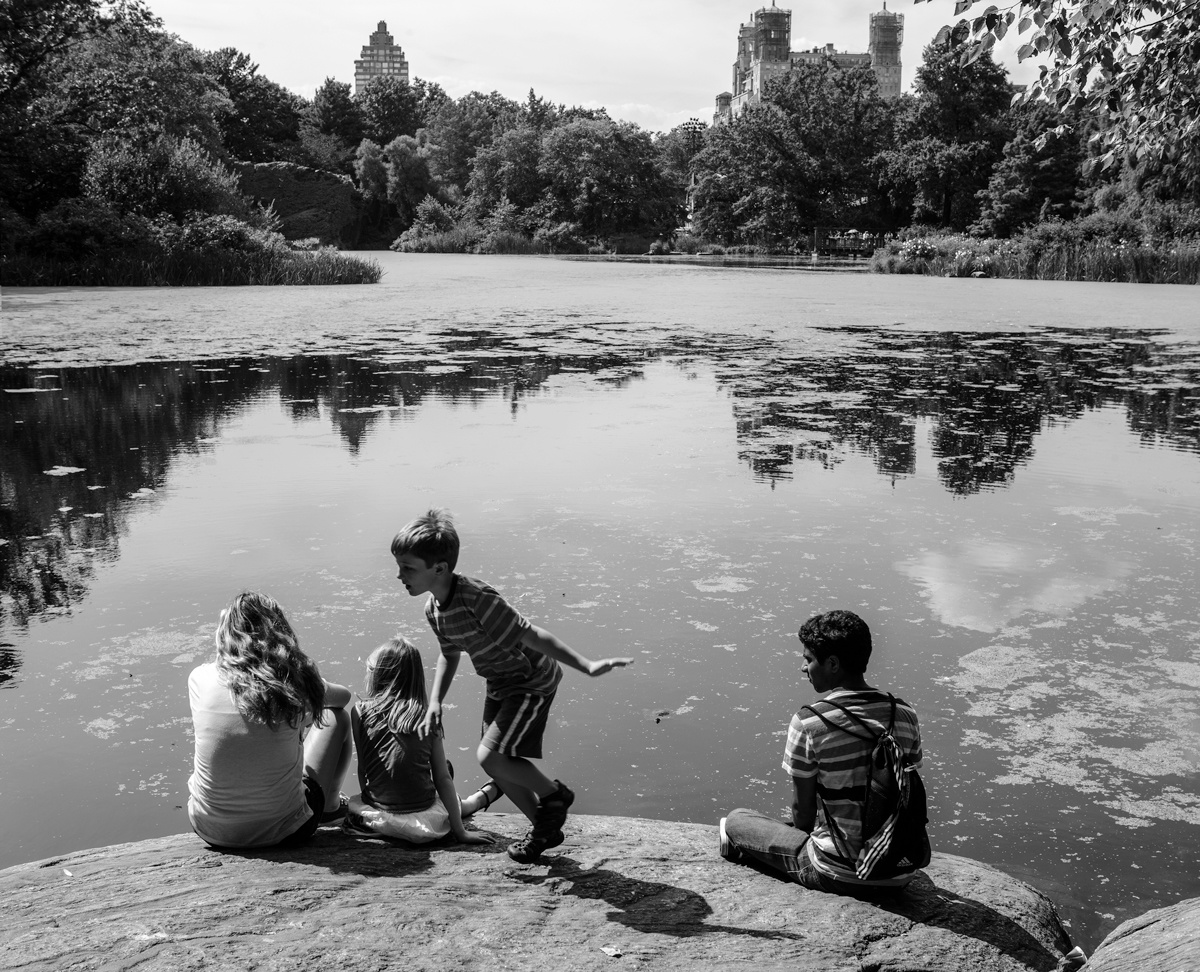This is the second part of The Ultimate Guide to Composition. Part One can be found here.
Now that we’ve covered some of the more common rules/guidelines that are present in photography and painting, let’s move on to some of the more abstract concepts and theories including framing devices and the ways that our brain organizes how we see.
Frame Within a Frame
To frame something, we are giving the object some kind of physical presence. Our photos are always seen though frames. Sometimes the image is in a literal frame, and sometimes the frame is just the edge of the screen. Framing can help to add context, meaning or depth to a photo – especially when the framing device is related to the subject. Using something to frame another part of your image creates a more immediate sense of focus on your subject and adds a three-dimensional element to an otherwise flat scene.

Creatively think of objects to use as frames – trees, doorways, tunnels, bridges, windows – anything that lets you look through something at something else.
More often than not, keep the exposure and focus on the subject. If possible, use a foreground frame that is darker than the background. Our eyes and brains immediately go to the brightest parts of the image. Using a dark frame provides depth without taking away from the subject.
The Gestalt Principles or Gestaltism
Gestalt Psychology, (Gestalt directly translated means “shape” or “form”) was developed by German psychologists in the 1920’s and founded on the belief that the mind uses self-organizing tendencies to form a “global whole.” Basically, these theories try to explain how we perceived things and organize them in our brain. You’re probably already aware of many of these and didn’t even know it. Some of these principles are similar and directly relate to one another.
Figure/Ground – As our brains take in and process constant visual stimulation, we will almost always tend to differentiate a form from its surroundings. The subject, in our mind’s eye, is known as the figure, and the surrounding area is known as the ground. This is the most basic compositional device.

Our perception of the figure can depend on multiple characteristics including color or contrast. “The Vase” by Edgar Rubin is the most well known example of Figure/Ground. Learning to control your definition of figure and ground in your photos will allow you greater control of the viewer’s perception of the subject matter and the negative space around it.
A strong grasp on this concept, and you’ll no longer need to shoot at a wide aperture to create separation of your subject to the background. When presented with a busier background, look for the part of the background that gives the best contrast to the subject.
Dark subject? Find the light area of the background.
Light subject? Look for the dark area. It’s not magic. It’s just a bit of awareness and common sense.

Sometimes color can be used to create separation. This is a great time to use complimentary colors. Common pairs are red/green, blue/orange and yellow/purple. A bolder color will come to the forefront of your image, and a lighter or less saturated element will recede.

Chiaroscuro and negative space also fall under the principle of “Figure/Ground.” Chiaroscuro, while sounding like a Mexican dessert, is the art of using strong contrasts between light and dark to affect the composition. Darkness helps to define the light in the same way that negative space helps to define the subject. Enhancing contrast has the power to enhance the illusion of depth.

Painters like Caravaggio and Rembrandt used this extensively.

Stanley Kubrick used it in the film "Barry Lyndon."

W. Eugene Smith
W. Eugene Smith, Garry Winogrand and Annie Leibovitz are considered to be modern masters of the Chiaroscuro.
The concept of negative space expands on the principle of the “ground.” When focusing on negative space, the space around the subject makes a great impact on defining the subject itself, while giving the eye a “place to rest.” In photography, negative space oftentimes produces a silhouette, drawing attention to the subject, or positive space.
Proximity and Grouping – When elements are placed close together, they are perceived as a group. When similar objects are placed together, they are perceived as a whole. This builds on the Figure/Ground principle.

Individually, these are just birds (separate shapes). When they are together, they are seen as one group.

Separately, they are Earth, Fire, Wind, Water and Heart. But when combined, they summon Captain Planet.

It’s important to keep the principle of proximity in mind when composing. Otherwise, if we forget this (along with Figure/Ground), background objects (like people) can grow out of people.

Facial symmetry is the foundation of classic definitions of beauty.
Symmetry and Balance – Symmetry in an image creates equilibrium. Unfortunately, with the way our brains work, seeing symmetry indirectly causes our brain to search for the break in symmetry rather than appreciate the balance. Remember, symmetrical composition can be boring, so it rests on the creator to find a way to remedy this by creating even more dynamic shots (see Wes Anderson video in Part One).
Balance does not always mean perfect symmetry. Most rules of composition exist to give balance – the Rule of Thirds, the Golden Triangle/Rectangle/Spiral. They all can be used to provide balance just as much as center composition - and sometimes they even do a better job...

The image on the left uses center composition and feels cramped. By simply offsetting an image, and using the Rule of Thirds, this image becomes more visually interesting while being more balanced. Using the principle Figure/Ground, both the monument (including its reflection) and the couple with the umbrella occupy their own spaces in the image.

Similarity - This builds on the Proximity/Grouping principle. Elements that have similar characteristics will often be viewed as a group or a pattern. The human brain is wired to recognize patterns. Repetition, especially with slight variations (called “anomalies”) can have a pleasing appearance.

Continuity – This is when the viewer’s eye is compelled to move beyond an object and continue through it. Leading Lines falls under this principle. The lines should be straight or curved, are not always obvious and guide the viewer’s eye somewhere else in the image.

This ideally creates a more fluid relationship between differing compositional elements.
Closure- Closure attempts to give the brain enough information so that it can form figures even if they aren’t entirely in frame. This is also known as “leaving a little to the imagination.” A closed shape can be boring, but if a subject isn’t completely in frame (and the mind finds it interesting), the brain will try to fill in the details. Degas was a master of this concept.
This is closely related to Similarity and Continuity. The brain wants to follow lines and contours even with the lines are not obvious or complete. It is believed that this developed because of evolution – being able to sense danger by perceiving predators from only small, recognizable features.

From the Gestalt Educational Program
The Gestalt Principles are usually described using the phrase, “The whole is other than the sum of its parts,” so using multiple principles in an image will ultimately create a more dynamic use of space (There is often a mistranslation of this phrase to “the whole is greater than the sum of its parts,” but the Gestalt Principles importantly allow for the individual visual characteristics to be broken down separately). At the end of the day, the Gestalt Principles, like all other compositional devices, are just tools to help guide us in making good (hopefully great) compositions.
Conclusion
Eliminate the nonessential. Successful images have no dead space or inactive parts. Use a good foundation – the Rule of Thirds, the Golden Triangles, the Baroque Diagonals and the Golden Ratio are excellent places to start. Then build on that foundation using good visual theory.
All this, of course, only gets us part of the way there. Just because someone has created a compositionally perfect photo, does not mean that the photo is interesting. But by using these techniques and guides, you will hopefully be able to create better balance in yours.














Really nice follow up to the first article. I am having flash backs to my photo classes again, in a good way. Those were the only classes I made it to regularly. ;)
Thanks Ralph! Glad you liked it!
These were excellent intros to important composition themes, succinctly explained and well illustrated. I particularly appreciated the reminder to study how the use of composition in painting relates to photography. I am also curious about the differences between composition in art and photography and wonder if the author has any reflections on that. Thanks.
Thank you for the feedback Bill! I think when comparing art to photography, there is definitely a pretty big overlap in terms of methodology (especially when one gets into realism/naturalism or even illusionistic realism (which is incredibly cool). It wasn't uncommon for realist painters to even use some kind of camera obscura, so that they were essentially looking at the world in very much the same way that photographers do (the write speed is just much faster these days).
More recently, there was Hopper and his compositional precision - he wanted to become a naval architect when he was younger. He was greatly influenced by Charles Méryon, a French artist that used architecture prominently and Rembrandt - a master of light.
I think when we get away from things that set out to portray the world realistically, the traditional structure of the real world applies less and less(we see this in modern and especially postmodern art)...but many of the theoretical concepts like the Gestalt still apply. Even in photographs, we don't have to follow rules to the letter...we're looking for balance. Some people have a better natural sense of it than others, and some of us have to study it more, so we can break down what we are doing and explain it to ourselves.
It's really great to see this kind of content on Fstoppers. Because really without composition you have nothing, regardless of gear and technique.
Thanks Tom! I completely agree!
I agree with you. However, having a perfectly "balanced" picture, is not the whole story. Also, it's about aesthetic, expressing an idea, feeling, etc. I'm aware of the fact that these elements are a highly subjective task.
Brilliant part 2 to an excellent summary on some essential design and photographic principles. Great article!
Thanks Dave!
Nice one for this :)
Chris... you're becoming a new favorite, both with your punchy work and your much needed commentary.
Thank you.
Every so often, I leave behind my gear and tote my wee little iPhone for a session of "mental pushups." Visual calisthenics. Rules of thirds, color harmony, subject irony, arcs, angles, isolation and anything else intentional.
Thank you for the artful reminder to push out... just... one... last... shot.
Here's a peek
http://lifeascinema.blogspot.com/2013/07/mental-push-ups.html
Hi Sean! Thanks for the very kind words!
Great write up! I love mental pushups...and if it weren't for them, I probably wouldn't have any images to put in this article.
excellent article with many ideas to try out and consider :) But maybe this is the point where we as photographers should stop misusing the term "negative space".
"Negative space" is when both the positive and the negative space make a recogniseable shape, as the example with the vase above or the arrow in the FedEx logo. A silhouette or a sky as in the example above is not negative space - it's just space ;)
Hi Claus,
Thanks for the feedback! I was always under the impression (and I could be wrong) that the term negative space - as it is applied to photography - has always been a little bit more loose than its usage in traditional design. The FedEx example is perfect - the outer space creates the perfect arrow. In art in general, the effect is much more of a conscious construct. Dali is one of my absolute favorites to do this.
With photography, I've always thought that the definition of negative space shifts..but only a little. A background element (like the sky) sets the exposure, leaving a silhouette (a black void of nothing), and our brain fills in what that blacked out object is. The absence of the sky in certain areas creates the perception of the figure.
I think this is a great point that you've raised...what other art concepts have been reinterpreted by photography?
Chiaroscuro is an italian word.
But just to remember that composition is both coming from the brain and some other different place.
Read Kandinsky's "About spiritual in art"
Absolutely it is...but it still sounds like a Mexican dessert :)
"Concerning the Spiritual in Art" is a great recommendation for anyone to read. I highly recommend it too. I think it's mandatory reading in art school. It's about 80 pages of "blow your mind." You can get it for free on the Project Gutenberg has it for free... http://www.gutenberg.org/ebooks/5321 ...but it's better with the pictures.
You can find it in different versions, from "On spiritual in art" to "The art of spiritual harmony"
Are they the same thing, just different translations?
This is an excellent follow-up with great examples. I don't think there is a photographer out there who shouldn't read this regardless of how long they have been shooting...event those with distinct developed styles may look at this and find a new perspective they had not thought of while shooting.
This is great FStoppers content.
Thank you Jason! I'm glad you appreciated it!
Great article, very nice and very good follow-up to the first part.
Very nice to see many familiar examples here. In addition to those for the Gestalt Theory take a second look for the "Gestalt" in the shadow in the landscape image with the lighthouse. Not that obvious, but if you want to see it you will .....
Well said. :)
Lovely interesting read. it really does need allot of practice to first get your exposure correct , than balance geometry lines and eye pleasing symmetry in pictures .
Thanks for reading!
There were many translations
Solid read. Thanks for that again!
Thank you!